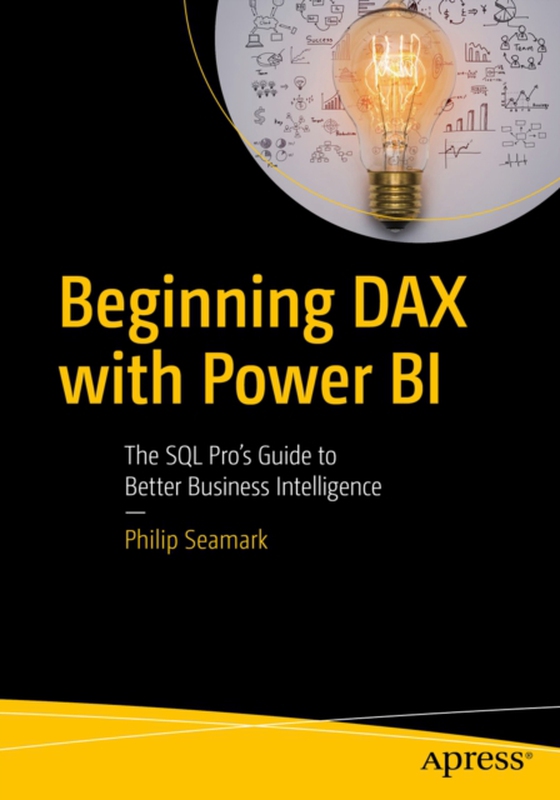
Beginning DAX with Power BI e-bog
473,39 DKK
(inkl. moms 591,74 DKK)
Attention all SQL Pros, DAX is not just for writing Excel-based formulas! Get hands-on learning and expert advice on how to use the vast capabilities of the DAX language to solve common data modeling challenges. Beginning DAX with Power BI teaches key concepts such as mapping techniques from SQL to DAX, filtering, grouping, joining, pivoting, and using temporary tables, all aimed at the SQL pro...
E-bog
473,39 DKK
Forlag
Apress
Udgivet
31 marts 2018
Genrer
UMP
Sprog
English
Format
pdf
Beskyttelse
LCP
ISBN
9781484234778
Attention all SQL Pros, DAX is not just for writing Excel-based formulas! Get hands-on learning and expert advice on how to use the vast capabilities of the DAX language to solve common data modeling challenges. Beginning DAX with Power BI teaches key concepts such as mapping techniques from SQL to DAX, filtering, grouping, joining, pivoting, and using temporary tables, all aimed at the SQL professional. Join author Philip Seamark as he guides you on a journey through typical business data transformation scenarios and challenges, and teaches you, step-by-step, how to resolve challenges using DAX. Tips, tricks, and shortcuts are included and explained, along with examples of the SQL equivalent, in order to accelerate learning. Examples in the book range from beginner to advanced, with plenty of detailed explanation when walking through each scenario. What You'll Learn Turbocharge your Power BI model by adding advanced DAX programming techniquesKnow when to use calculated measures versus calculated columnsGenerate new tables on the fly from existing dataOptimize, monitor, and tune Power BI to improve performance of your modelsDiscover new ideas, tricks, and time-saving techniques for better models Who This Book Is For Business intelligence developers, business analysts, or any SQL user who wants to use Power BI as a reporting tool. A solid understanding of SQL is recommended, as examples throughout the book include the DAX equivalents to SQL problem/solution scenarios.
 Dansk
Dansk

